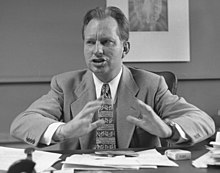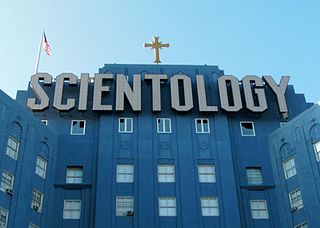
Dianetics is a set of pseudoscientific ideas and practices regarding the metaphysical relationship between the mind and body created by science fiction writer and Scientology founder L. Ron Hubbard. Dianetics is practiced by followers of Scientology and the Nation of Islam.
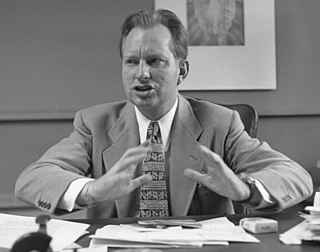
Lafayette Ronald Hubbard was an American author and the founder of Scientology. A prolific writer of pulp science fiction and fantasy novels in his early career, in 1950 he authored Dianetics: The Modern Science of Mental Health and established organizations to promote and practice Dianetics techniques. Hubbard created Scientology in 1952 after losing the rights to Dianetics in bankruptcy proceedings, and would manage the Church of Scientology until his death in 1986. Born in Tilden, Nebraska, in 1911, Hubbard spent much of his childhood in Helena, Montana. While his father was posted to the U.S. naval base on Guam in the late 1920s, Hubbard traveled to Asia and the South Pacific. In 1930, Hubbard enrolled at George Washington University to study civil engineering but dropped out in his second year. He began his career as a prolific writer of pulp fiction stories and married Margaret Grubb, who shared his interest in aviation.

In Scientology, Operating Thetan (OT) is a state of complete spiritual freedom in which one is a "willing and knowing cause over life, thought, matter, energy, space and time". The Church of Scientology offers eight "levels" of OT, each level costing thousands of US dollars.

In Dianetics and Scientology, auditing is a sequence of actions whereby the "auditor" takes an individual through times in their current or past lives with the purpose of ridding the individual of negative influences from past events or behaviors. According to practitioners, auditing is meant to bring the individual to "Clear" status; thus, an individual being audited is known as a "preclear" or PC.

Dianetics: The Modern Science of Mental Health, sometimes abbreviated as DMSMH, is a book by L. Ron Hubbard about Dianetics, a system that he developed from a combination of personal experience, basic principles of Eastern philosophy and the work of Sigmund Freud, the founder of psychoanalysis. The book is a canonical text of Scientology. It’s colloquially referred to as Book One. The book launched the movement, which later defined itself as a religion, in 1950. As of 2013, New Era Publications, the international publishing company of Hubbard's works, sells the book in English and in 50 other languages.

Scientology founder L. Ron Hubbard explicitly compared his teachings to the science-fiction subgenre space opera. In his writings, wherein thetans were reincarnated periodically over quadrillions of years, retaining memories of prior lives, to which Hubbard attributed complex narratives about life throughout the universe. The most controversial of these myths is the story of Xenu, to whom Hubbard attributed responsibility for many of the world's problems.

Bare-faced Messiah: The True Story of L. Ron Hubbard is a posthumous biography of Scientology founder L. Ron Hubbard by British journalist Russell Miller. First published in the United Kingdom on 26 October 1987, the book takes a critical perspective, challenging the Church of Scientology's account of Hubbard's life and work. It quotes extensively from official documents acquired using the Freedom of Information Act and from Hubbard's personal papers, which were obtained via a defector from Scientology. It was also published in Australia, Canada and the United States.
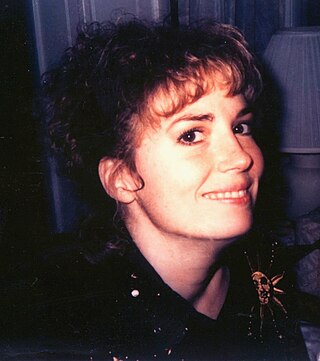
Since the founding of the Church of Scientology in 1954 by L. Ron Hubbard, the relationship between Scientology and psychiatry has been dominated by strong opposition by the organization against the medical specialty of psychiatry and of psychology with themes relating to this opposition occurring repeatedly throughout Scientology literature and doctrine. According to the Church of Scientology, psychiatry has a long history of improper and abusive care. The group's views have been disputed, criticized, and condemned by experts in the medical and scientific community and have been a source of public controversy.

MEST is an acronym for matter, energy, space and time, and means the physical universe. It was coined in 1950 by Scientology founder L. Ron Hubbard, and is spoken as a word rather than spelling out the letters.

Ronald Edward "Ron" DeWolf, also known as "Nibs" Hubbard, was the eldest child of Scientology's founder L. Ron Hubbard by his first wife Margaret Louise Grubb. He is known for having been highly critical of his father and of the Church of Scientology.

Gerald "Gerry" Armstrong is a critic of the Church of Scientology and a former member. As an archivist and assistant to L. Ron Hubbard's biographer, he discovered the truth about Hubbard's life history which impugned the Church's fantastic and idealized version. When Church management refused to correct the record, Armstrong left Scientology with copies of some of the documents. For decades he was harassed by the Church and pursued through the court systems, bankrupting him, in an attempt to keep the materials and facts undisclosed. But with each successive court case, more documents were inevitably disclosed as evidence and became part of the court's records and accessible to the public.
The Church of Scientology publicly classifies itself as a religion, but scholars and other observers regard it as a business, because the organization operates more like a for-profit business than a religious institution. Some scholars of sociology working in religious studies consider it a new religious movement. Overall, as stated by Stephen A. Kent, Scientology can be seen as a "multi-faceted transnational corporation that has religion as only one of its many components. Other components include political aspirations, business ventures, cultural productions, pseudo-medical practices, pseudo-psychiatric claims, and, an alternative family structure."
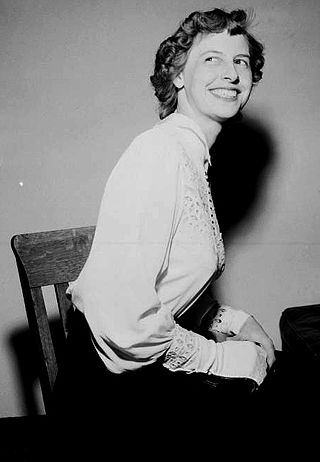
Sara Elizabeth Bruce Northrup Hollister was an American occultist and second wife of Scientologist founder L. Ron Hubbard. She played a major role in the creation of Dianetics, which evolved into the religious movement Scientology. Hubbard would evolve into the leader of the Church of Scientology.
Keeping Scientology Working is the most important policy in the Church of Scientology, serves as the keystone for every action, and is mandated to be presented as the first document at the beginning of every single course of study in Scientology. Written by founder of Scientology L. Ron Hubbard, and originally issued in 1965, it was reissued in 1970 and again in 1980. It lays out ten points concerning the exact application and preservation of "Standard Tech" in Dianetics and Scientology, and the eradication of "non-standard tech", more commonly referred to in Scientology as "squirreling."

The intersection of Scientology and abortion has a controversial history which began with Scientology founder L. Ron Hubbard's discussion of abortion in his 1950 book Dianetics: The Modern Science of Mental Health. Hubbard wrote in Dianetics that abortion and attempts at abortion could cause trauma to the fetus and to the mother in both spiritual and physical ways. Scientologists came to believe that attempted abortions could cause traumatic experiences felt by the fetus, which would later be remembered as memories referred to in Scientology as "engrams". In the Scientology technique called Auditing, Scientologists are frequently queried regarding their sexual feelings and behaviors. These questions about Scientologists' sexual behavior are often posed to members during "security checks", a specific form of auditing sessions where individuals are required to document their divergence from the organization's ethics. One of the questions asked in these security checks is, "Have you ever been involved in an abortion?".

Scientology is in part derived from, and shares elements with, a number of esoteric or occult systems. The extent of the influence of specific occult belief systems on Scientology is a subject of debate amongst scholars.
Excalibur is an unpublished manuscript written in 1938 by L. Ron Hubbard, later the founder of Scientology. The contents of Excalibur formed the basis for Dianetics: The Modern Science of Mental Health (1950) and some of Hubbard's later publications.
L. Ron Hubbard, the creator of Dianetics and Scientology spent the first four decades of his life as a student, a pulp fiction author, a low-ranking officer in the US Navy, and an occult practitioner.
From 1950 to 1953, L. Ron Hubbard promoted Dianetics until losing the rights to term and pivoting to Scientology. In 1953, Scientology incorporated as church.
